As June approaches, it’s time to start thinking about what leafy green vegetables you can plant in your garden. With the warmer weather and longer days, this month is the perfect time to sow seeds or transplant seedlings for a bountiful harvest later in the summer. Whether you’re an experienced gardener or just starting out, there are plenty of options to choose from that will add variety and nutrition to your meals. In this article, we’ll explore some of the best leafy greens to plant in June and provide tips on caring for them throughout the growing season. So grab your gardening gloves, and let’s get started!
Red Leaf Amaranth
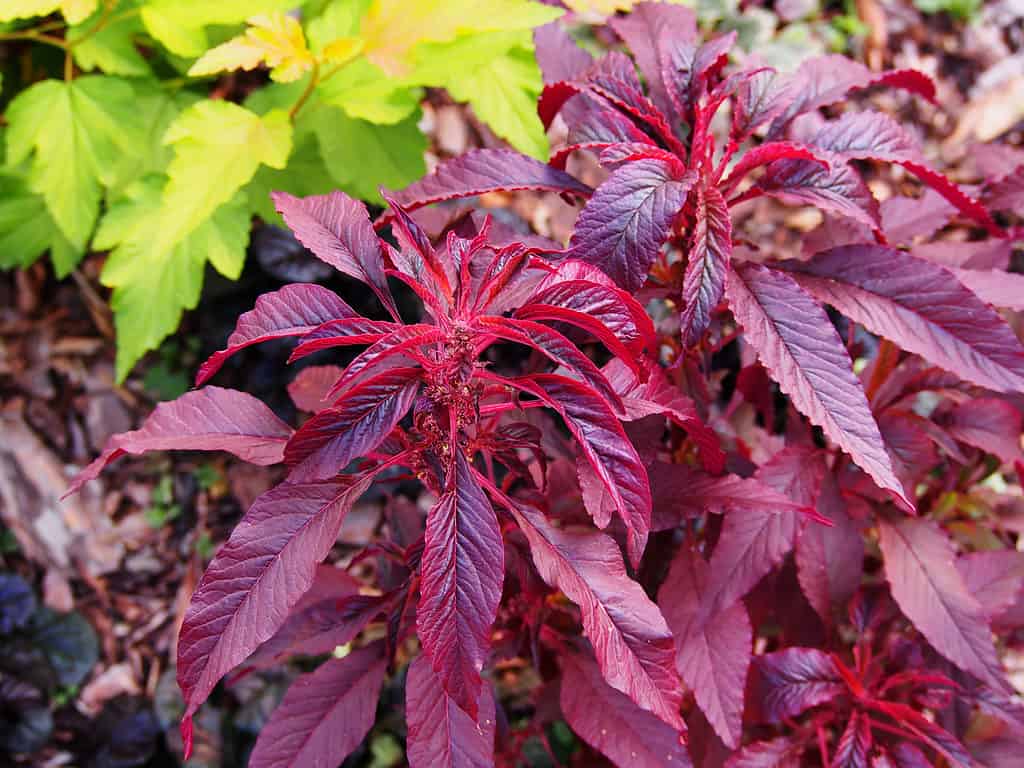
Red-leaf amaranth has edible leaves.
©Anna Gratys/Shutterstock.com
Redl-leaf amaranth, also referred to as Chinese spinach, is a leafy green vegetable that can be planted in the month of June and harvested within a month’s time. This fast-growing plant thrives in hot weather conditions and has the potential to reach up to 6 feet tall. One of its most impressive qualities is that it continues producing throughout the growing season.
Aside from its ability to yield consistent crops, red-leaf amaranth boasts an impressive nutritional profile. In fact, this vegetable contains higher levels of calcium, niacin, and iron than other popular greens such as beet greens, spinach, and chard. With these valuable nutrients readily available in this one plant alone, incorporating red-leaf amaranth into your diet can offer numerous health benefits.
When planting red leaf amaranth in June or any other time during warm weather seasons, keeping the soil moist with regular watering is important for ensuring optimal growth outcomes. Once matured enough for harvesting, this vibrant red-green color combination vegetable will no doubt make an excellent addition to any fresh salad dish!
Swiss Chard

Swiss Chard comes in many colors and is highly nutritious.
©iStock.com/zysman
Swiss chard, also known as perpetual spinach due to its similar taste and appearance, is a versatile and nutrient-dense leafy green vegetable. Although it is not actually related to spinach, this plant belongs to the same family as beetroot and produces dark green leaves with colorful stems in shades of white, yellow, pink, or red. The scientific name for Swiss chard is Beta vulgaris var. cicla.
One of the advantages of growing Swiss chard is that it can thrive in mild climates all summer long and even over winter in some areas. This means that you can enjoy fresh greens from your garden throughout the year! Moreover, Swiss chard has a relatively short harvest time (around 60 days), making it an excellent choice for those who want quick results without much fuss.
Aside from being easy to grow and maintain, Swiss chard packs a nutritional punch. It is an excellent source of vitamin A and vitamin K – both crucial nutrients for maintaining healthy bones – as well as a good source of vitamin C which supports immune function. Additionally, Swiss chard contains essential minerals such as magnesium which helps regulate blood pressure levels.
But what really sets Swiss chard apart is its antioxidants beta-carotene (which supports eye health), lutein (which may reduce the risk of chronic diseases), and zeaxanthin (which promotes skin health). These compounds help protect cells against damage caused by free radicals in our bodies.
Vulcan Chard
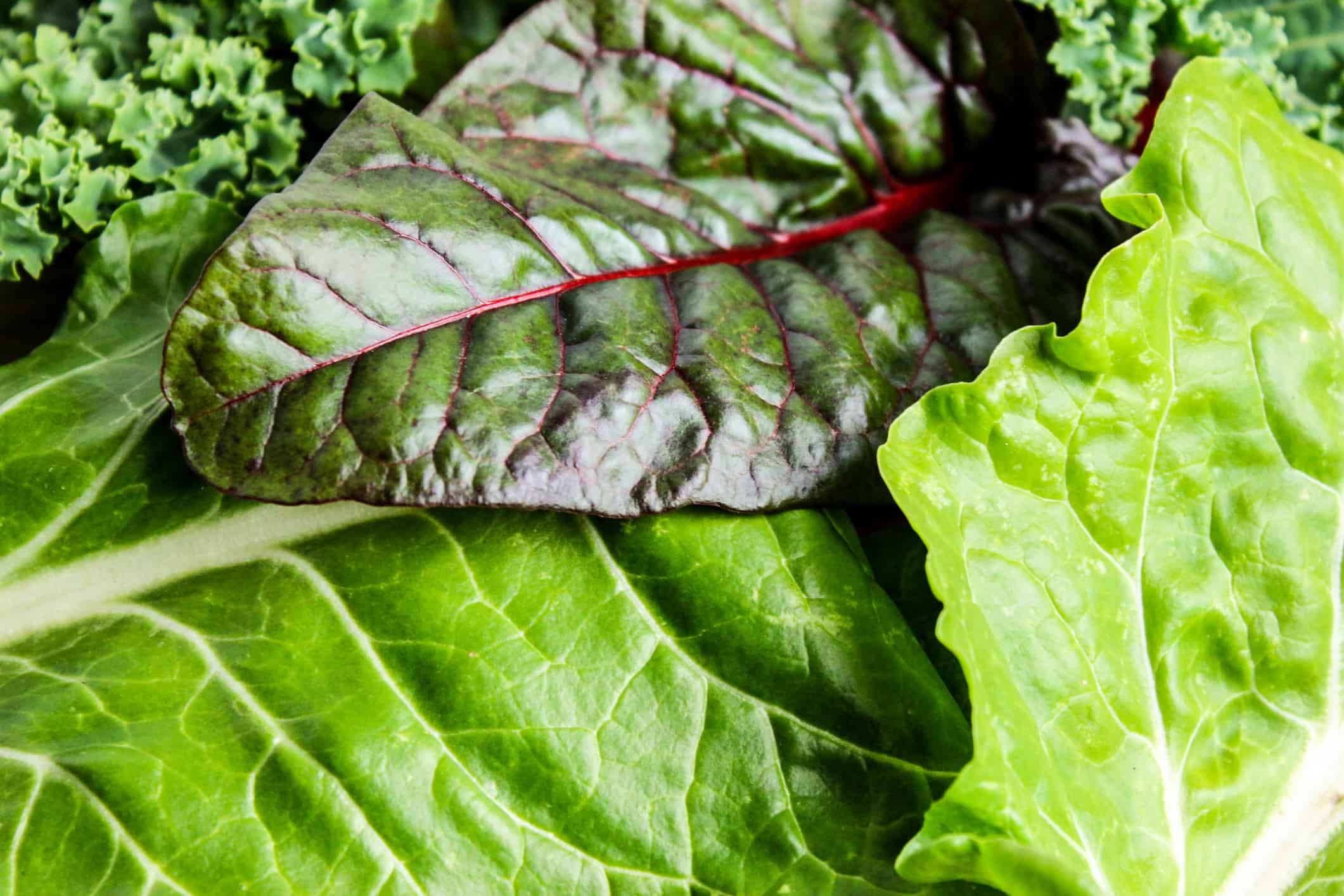
Chard and kale are both nutritious salad greens. Try them fresh or steamed.
©iStock.com/lauraag
Vulcan chard, also known by its scientific name of Beta vulgaris subsp. vulgaris is a popular leafy green vegetable that gardeners can plant in June for a bountiful harvest. While it may not be the most heat-tolerant variety of chard available, it can still withstand summer temperatures up to 85°F and will thrive in partly shady locations. In terms of cold tolerance, Vulcan chard is an excellent choice as it can survive through the first few mild frosts without any issues.
One of the standout features of this type of chard is its prolific nature. It typically produces more leaves than one person could possibly eat! This makes it an ideal option for those who want to enjoy fresh greens throughout the growing season while also having plenty left over for preserving or sharing with others.
Overall, if you’re looking for an easy-to-grow leafy green vegetable that offers both versatility and flavor, then Vulcan chard should definitely be on your radar. Whether eaten raw or cooked into soups and stews, this nutrient-rich superfood is sure to become a staple in your kitchen all year round!
Butterhead Lettuce
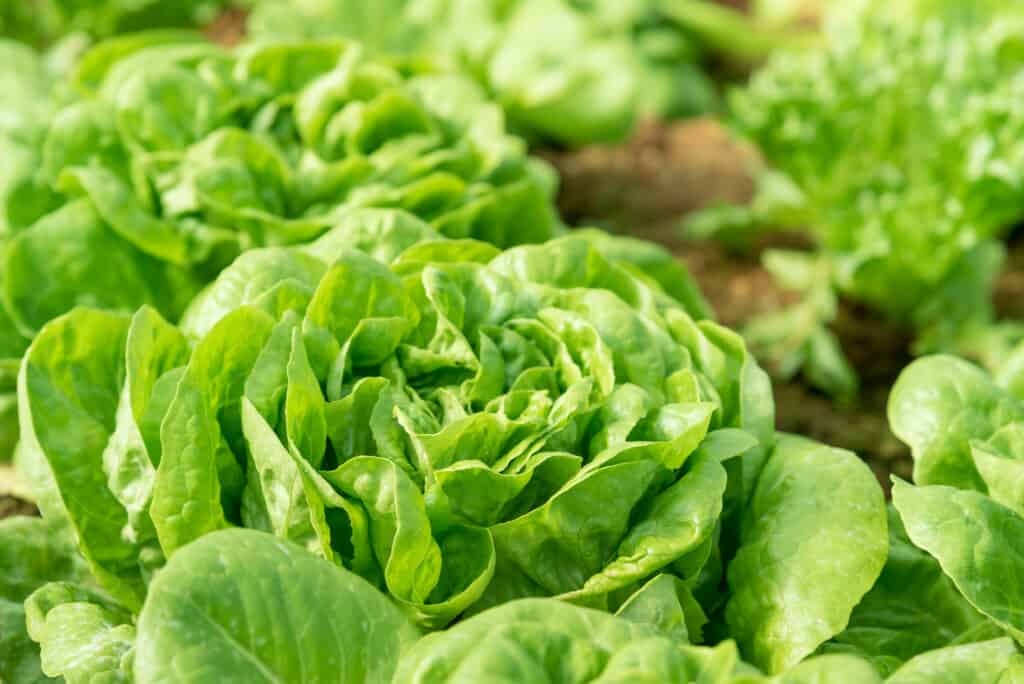
Butter lettuce is one of the best leafy greens to plant in June.
©iStock.com/fotolism_thai
Butterhead lettuce (Lactuca sativa) is a versatile and nutritious leafy green vegetable that should not be overlooked in your summer garden. This heat-tolerant lettuce thrives in warm weather and is perfect for planting in June, making it an excellent addition to any garden or container.
One of the advantages of growing butterhead lettuce is its ability to produce beautiful heads of delicious lettuce all summer long with proper care. With plenty of mulch and shade cloth on the hottest days, you can ensure that your plants stay cool and hydrated throughout the season.
Not only does butterhead lettuce taste great, but it is also loaded with essential vitamins and nutrients. It is an excellent source of vitamin A, which supports healthy vision; vitamin C, which boosts immune function; vitamin K, which promotes blood clotting; calcium, which helps build strong bones; and iron, which aids in oxygen transport throughout the body.
Green Leaf Lettuce
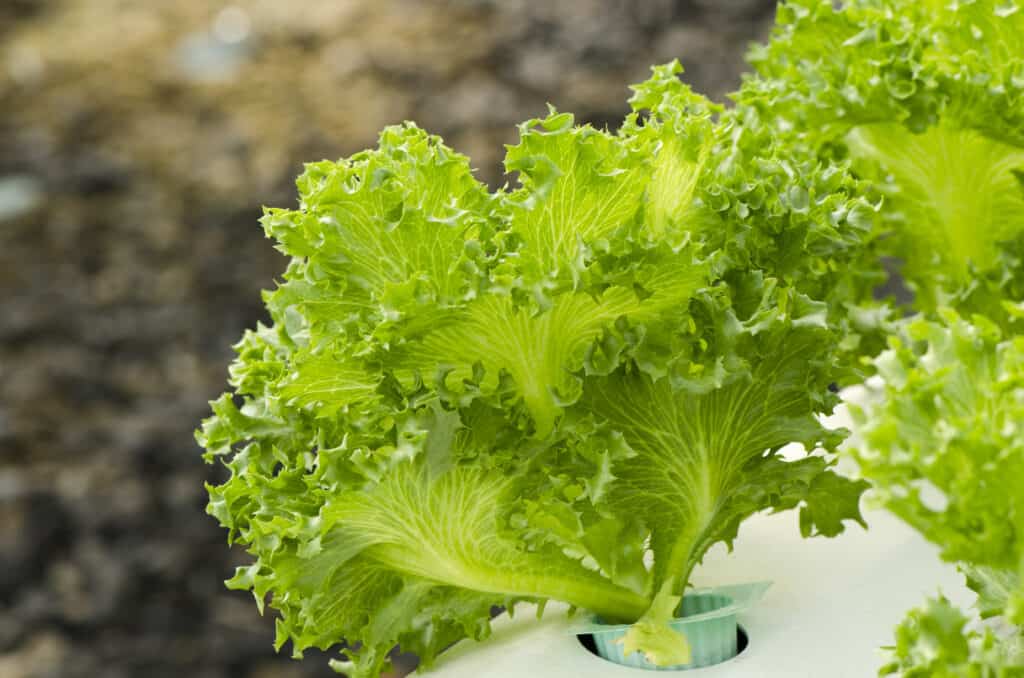
Green leaf lettuce comes in several new cultivars that are heat and bolt resistant.
©wasanajai/Shutterstock.com
Gardening enthusiasts looking to add some green leaf lettuce to their gardens in the month of June have several cultivars to choose from that are known for their heat tolerance. Among these, Amish Deer Tongue, Green Ice, and Oak Leaf are particularly noteworthy. These varieties have been carefully cultivated over time to withstand high temperatures without compromising on taste or texture. In fact, they thrive in hot weather conditions and can be planted directly into garden beds or containers during the summer months with ease. Whether you’re a seasoned gardener or just starting out, planting these heat-tolerant green leaf lettuce cultivars is a great way to enjoy fresh and nutritious produce throughout the season. So go ahead and get your gardening gloves ready. It’s time to start planting!
Red Leaf Lettuce
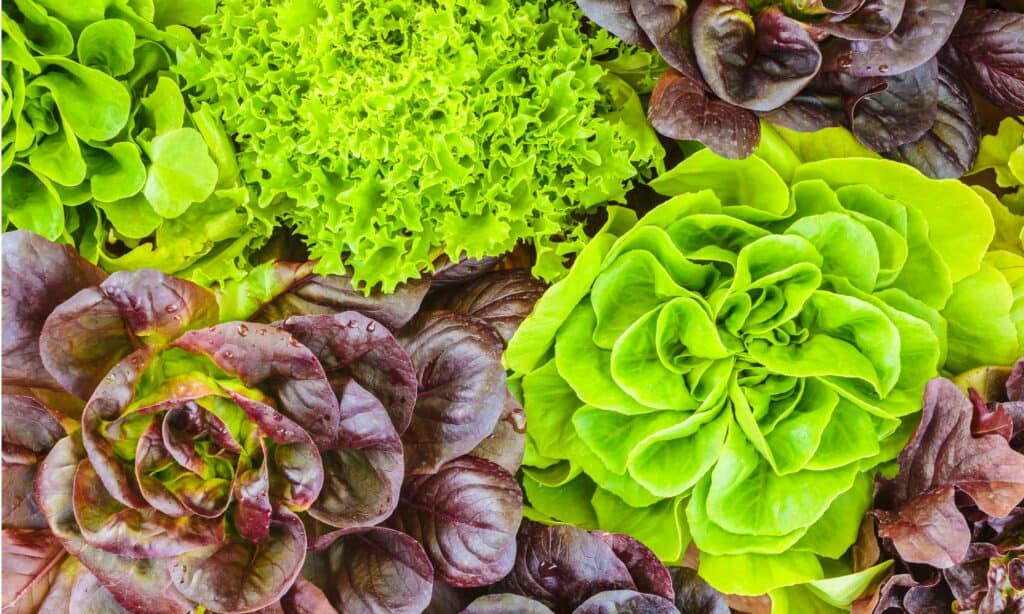
Red leaf lettuce cultivars exist that are bolt, heat, and burn resistant.
©iStock.com/DutchScenery
If you’re looking to add some color and variety to your garden this summer, red-leaf lettuce is a great option. Fortunately, horticulturists have developed several cultivars that are specifically designed for hot weather and sun exposure.
One of the key benefits of these varieties is that they are slow to bolt. This means that they won’t start producing seeds too quickly, which can cause them to become bitter and tough. Instead, you’ll be able to enjoy crisp and tender leaves throughout the season.
In addition to being heat-tolerant, many of these cultivars are also resistant to burning in the sun. This is important because intense sunlight can damage the delicate leaves of lettuce plants, making them less flavorful and less appealing overall.
Some top choices for red leaf lettuce include Lollo Rosso, Ruby, and Red Sails. Each one has its own unique flavor profile and appearance – from deep burgundy hues to bright ruby-red tones – so don’t be afraid to experiment with different varieties until you find your favorite.
Overall, planting red-leaf lettuce in June is a smart choice for any gardener who wants fresh greens all summer long. With careful attention paid to soil quality and watering schedules, you should be able to harvest plenty of delicious leaves in no time at all!
Crisphead Lettuce
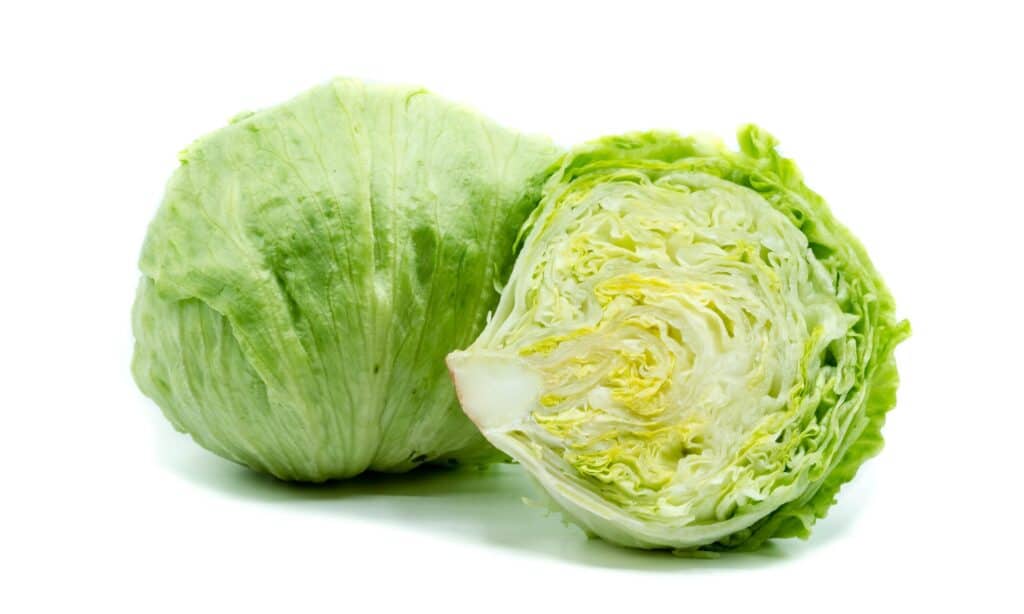
Crisphead lettuce is also called iceberg lettuce.
©iStock.com/Animaflora
If you’re a fan of crispy, refreshing lettuce in your summer salads, you’ll be pleased to know that there are now several varieties of crisphead and iceberg lettuces available that can withstand the heat and harsh sun of the season. Gone are the days when these types of lettuces would quickly bolt or burn when temperatures rose too high.
In particular, Great Lakes 118, Minetto, and Anuenue have proven to be excellent choices for gardeners looking to grow leafy greens during the summer months. These newer strains offer more resilience than their predecessors; they’re slower to bolt and less prone to burning even in direct sunlight.
Whether you’re an experienced gardener or just starting out with a few pots on your balcony, it’s worth considering planting one of these hardy lettuce varieties this June. Not only will they add some fresh crunchiness to your meals throughout the summer season, but they’ll also provide a satisfying sense of accomplishment as you watch them flourish under your care despite challenging weather conditions.
Romaine Lettuce
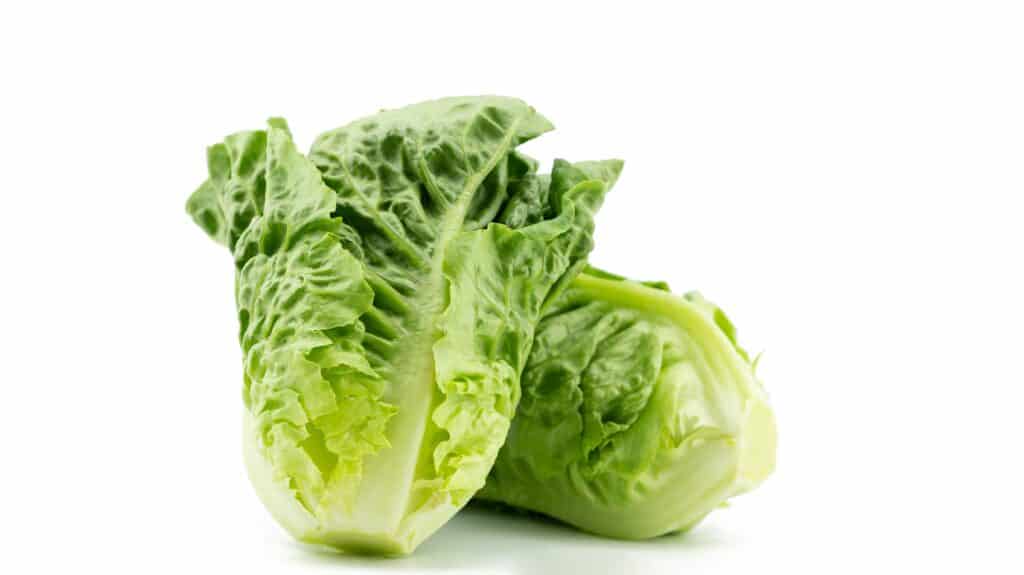
Romaine lettuce is one of the easiest lettuce types to grow.
©2158916329/Shutterstock.com
As the summer months approach, many gardeners are eager to plant their favorite leafy green vegetables, including romaine lettuce. Fortunately, horticulture experts have been working hard to create new cultivars of romaine that can withstand hot and dry climates without bolting or burning.
Some of the top cultivars for this purpose include Manoa, Parris Island, and Green Towers. In fact, there are now around a dozen different varieties of romaine lettuce that have been specifically developed to thrive in these challenging conditions.
These new cultivars not only offer greater resilience against the heat and sun but also provide an excellent source of nutrients for those looking to maintain a healthy diet throughout the summer months. With so many options available today, it is easier than ever before for gardeners to enjoy fresh and flavorful romaine all season long!
Mustard Greens
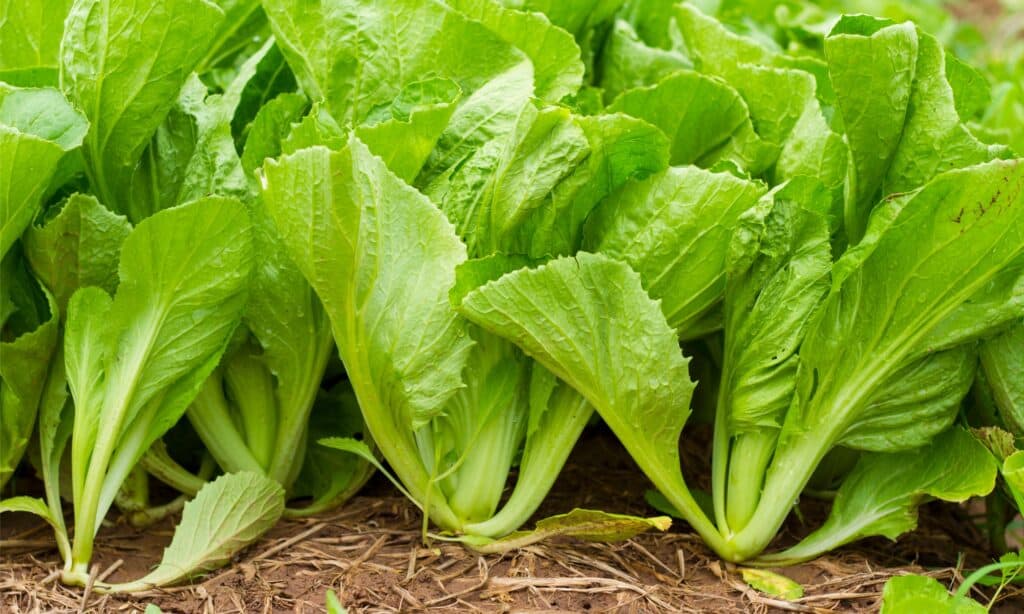
Many mustards, especially Asian mustards, are heat-tolerant.
©iStock.com/trangiap
If you’re looking for a leafy green vegetable to plant in June, consider trying out some Asian mustard greens. These types of mustard greens are well-known for their ability to thrive in hot summer weather conditions, making them an excellent choice for home gardeners who live in warmer climates.
Two varieties that come highly recommended include the Red Giant and Florida Broadleaf mustards. Both of these plants can tolerate high temperatures without succumbing to heat stress or wilting, which means you’ll be able to enjoy fresh greens all summer long. Both of these varieties are known for their hot taste, which adds a bit of spice to summer salads.
For those who prefer milder flavors, the All-America Selections winner Red Kingdom Mizuna is another great option worth exploring. This mild-tasting mustard green has beautiful red leaves and makes an excellent addition to salads or sandwiches.
How To Keep Leafy Greens Cool in Summer
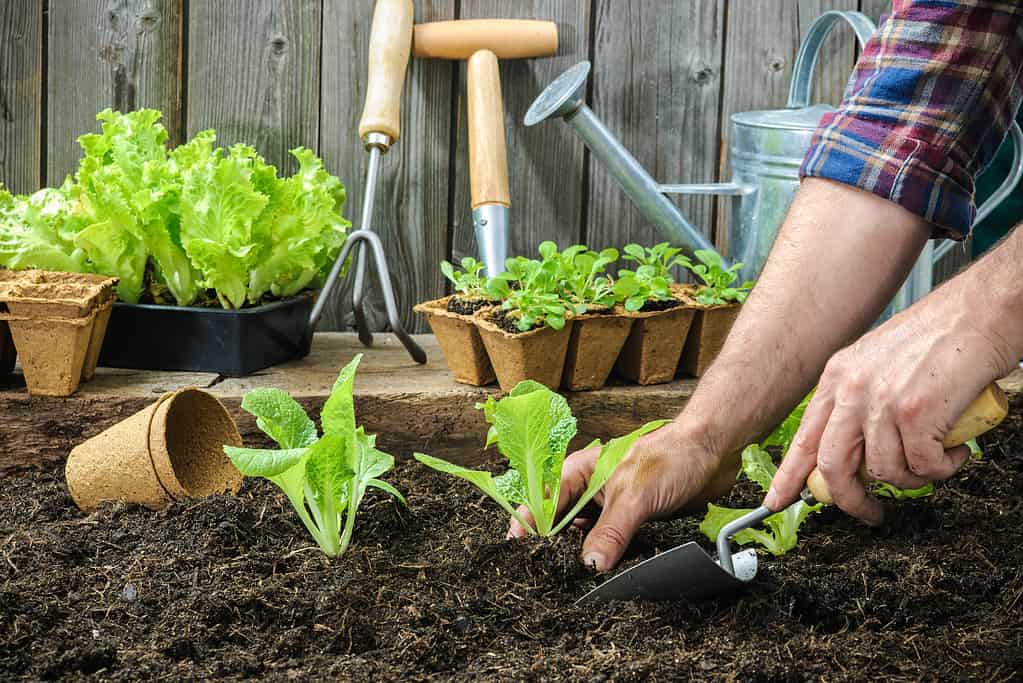
Plant young seedlings of lettuce so that they receive morning sunlight and afternoon shade.
©iStock.com/AlexRaths
When growing leafy green vegetables, one of the biggest challenges is preventing them from bolting or going to seed prematurely. To keep your greens cool and prevent this issue, there are several tricks that you can try.
One option is to plant your leafy greens behind other taller vegetables that provide shade and protection from the sun. This will help to keep them cooler and reduce their exposure to direct sunlight.
Another strategy is to use shade cloth or row covers over your plants. These materials can be placed directly on top of your crops or attached to stakes around the perimeter of your garden bed. They will provide additional shade and protect against excessive heat and light. A forty percent shade cloth is perfect for this purpose.
Watering frequently is also important for keeping leafy greens cool. Regular watering helps to maintain consistent moisture levels in the soil, which can help regulate temperature fluctuations.
Thick mulch is another effective tool for cooling off leafy green plants. A layer of organic material such as straw, leaves, or grass clippings spread over the soil surface provides insulation against heat while also conserving moisture in the soil.
Finally, placing lettuces so that they are shaded in the afternoon can be a simple but effective way to keep leafy greens cool during hot summer months when temperatures soar during midday hours. By choosing a location with partial sunlight instead of full sun exposure all day long, you can create an optimal environment for healthy growth without worrying about premature bolting due to overheating.
The photo featured at the top of this post is © lzf/Shutterstock.com
Thank you for reading! Have some feedback for us? Contact the AZ Animals editorial team.







